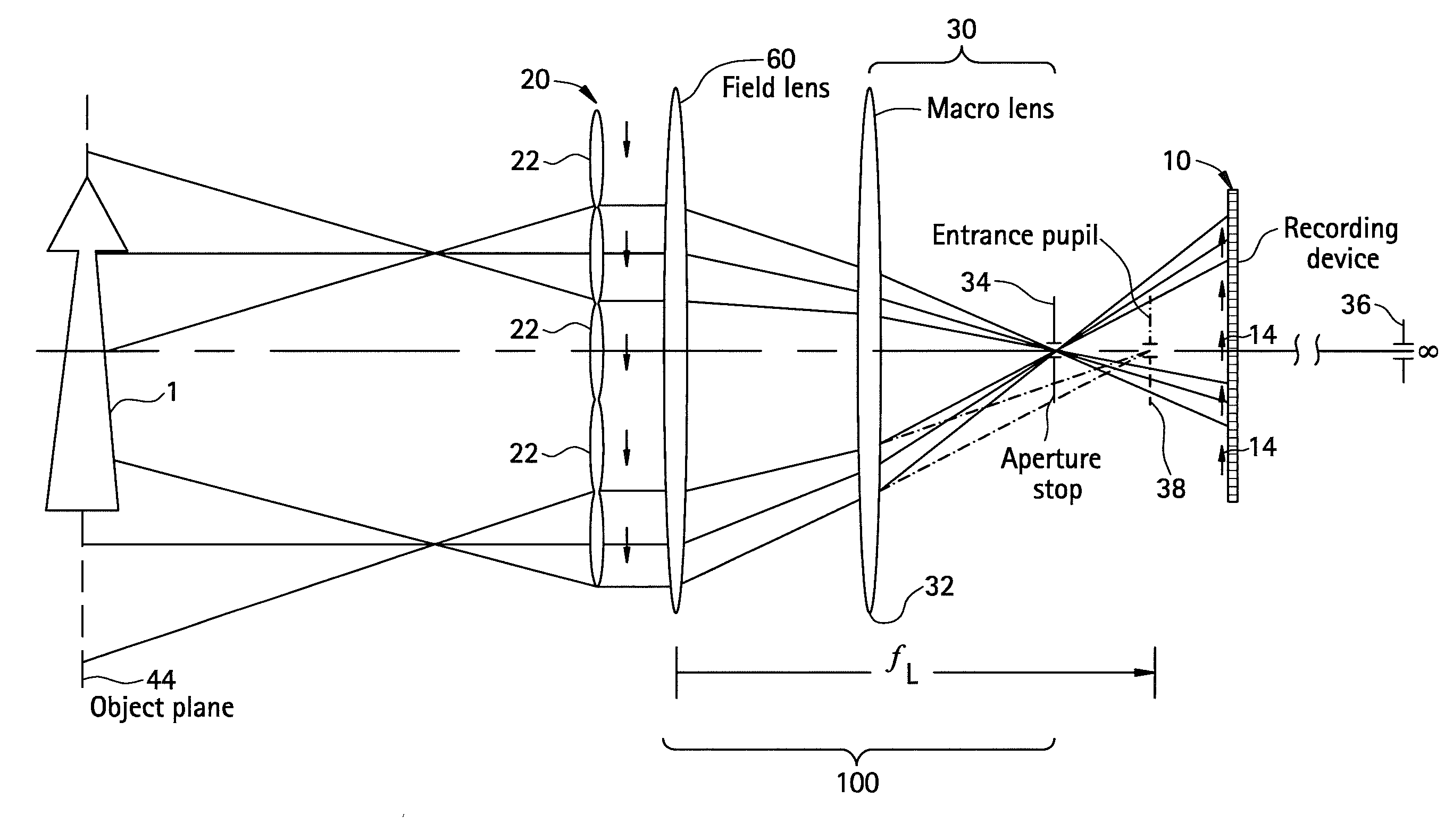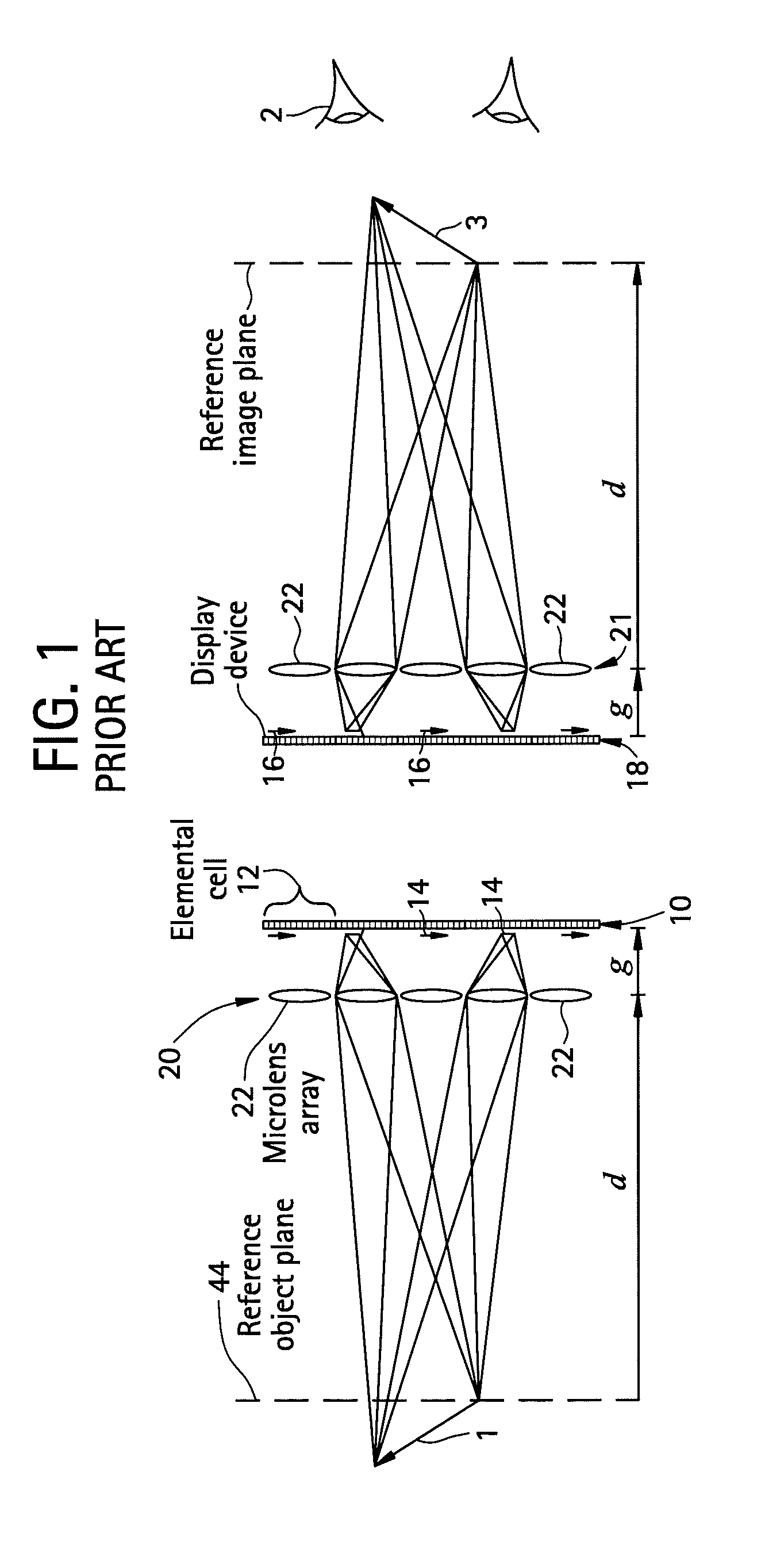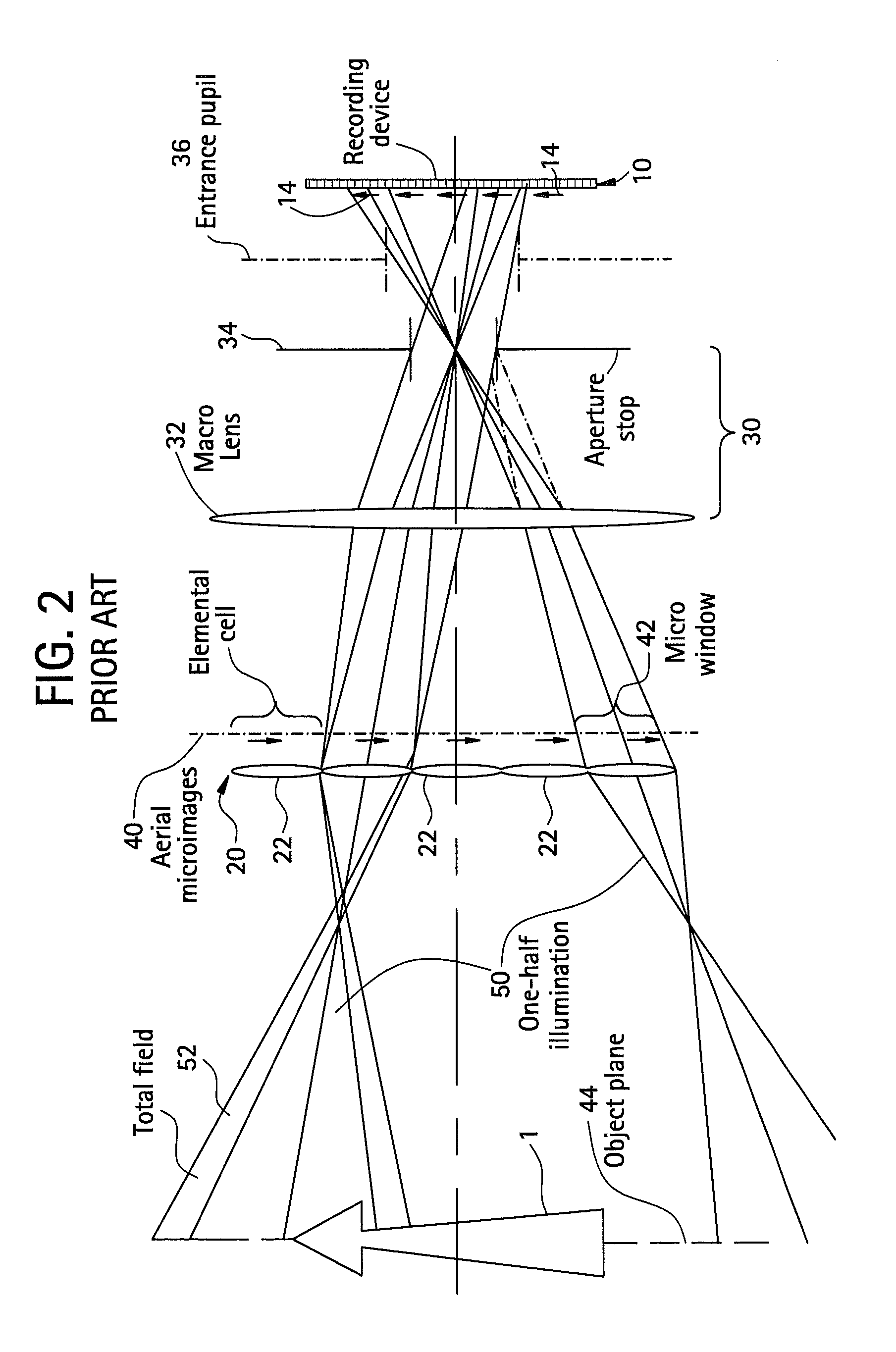Three-dimensional imaging apparatus
a three-dimensional object and imaging apparatus technology, applied in the field of three-dimensional imaging apparatuses, can solve the problems of inconvenient drawbacks of techniques, complicated implementation of barriers, and limited performance of grin lenses in non-paraxial imaging,
- Summary
- Abstract
- Description
- Claims
- Application Information
AI Technical Summary
Problems solved by technology
Method used
Image
Examples
Embodiment Construction
[0027]FIG. 1 shows a schematic configuration of an Integral Imaging (InI) system. As seen in FIG. 1, in the pickup stage a collection of elemental images 14, each with different perspective of the 3D scene 1, is generated onto the matrix sensor device 10. In other words, in the pickup stage of an InI system, microlens array 20 generates a collection of 2-dimensional elemental images 14 onto a matrix sensor device 10, such as a charge-coupled device (CCD), a CMOS sensor, or other appropriate device.
[0028]In the reconstruction process the recorded elemental images 16 are displayed by a matrix display device 18, such as a liquid crystal display (LCD) or other appropriate device, placed just in front of another microlens array 21. In other words, in the reconstruction stage, the set of recorded elemental images 16 are displayed in front of a second microlens array 21, providing the observer 2 with a reconstructed 3-dimensional image 3.
[0029]Although all the elemental images 16 are image...
PUM
 Login to View More
Login to View More Abstract
Description
Claims
Application Information
 Login to View More
Login to View More - R&D
- Intellectual Property
- Life Sciences
- Materials
- Tech Scout
- Unparalleled Data Quality
- Higher Quality Content
- 60% Fewer Hallucinations
Browse by: Latest US Patents, China's latest patents, Technical Efficacy Thesaurus, Application Domain, Technology Topic, Popular Technical Reports.
© 2025 PatSnap. All rights reserved.Legal|Privacy policy|Modern Slavery Act Transparency Statement|Sitemap|About US| Contact US: help@patsnap.com



